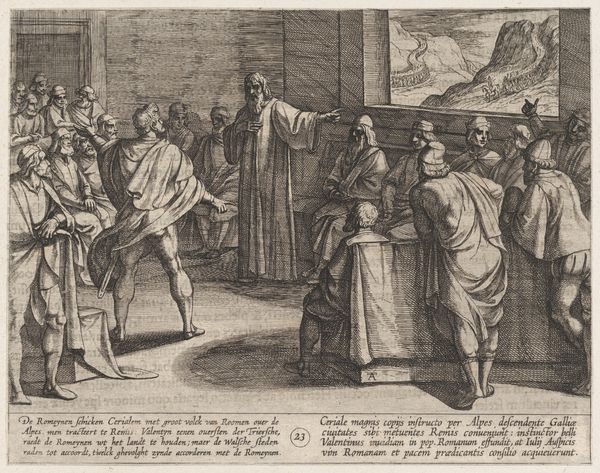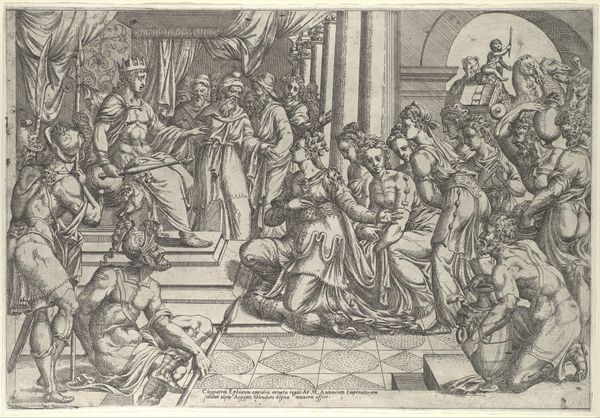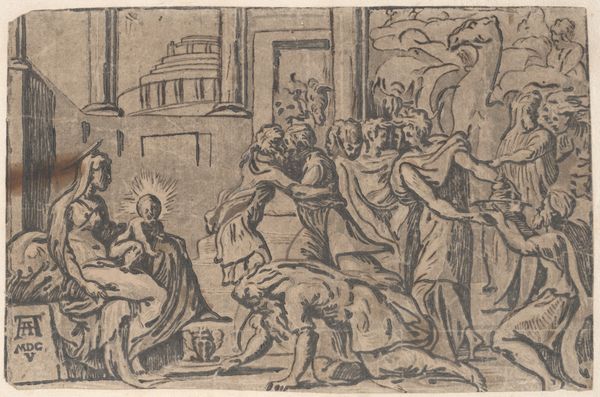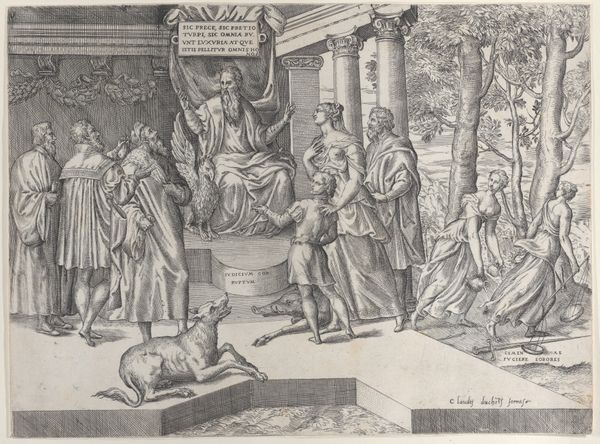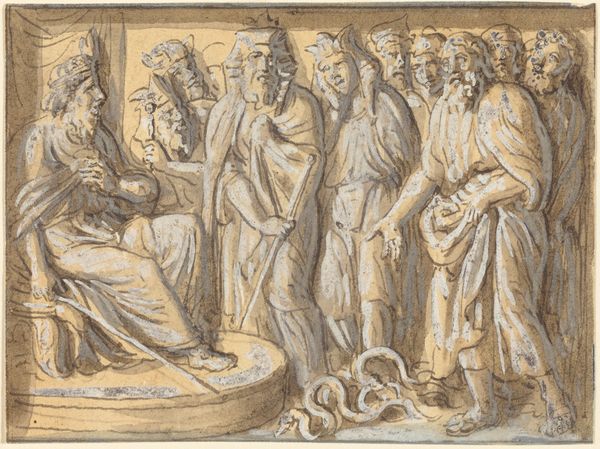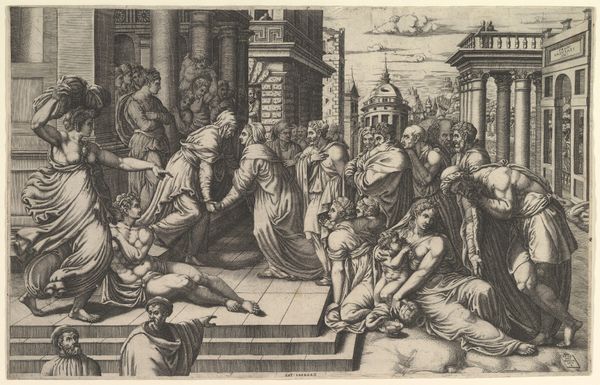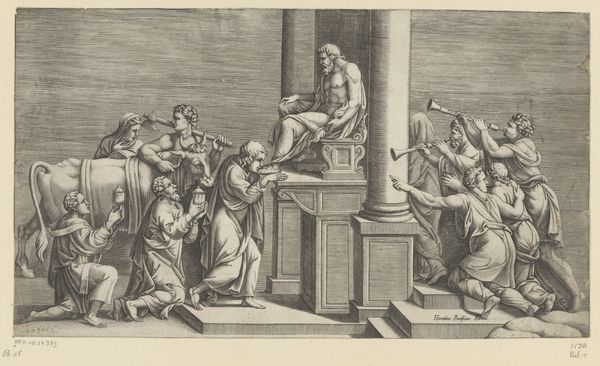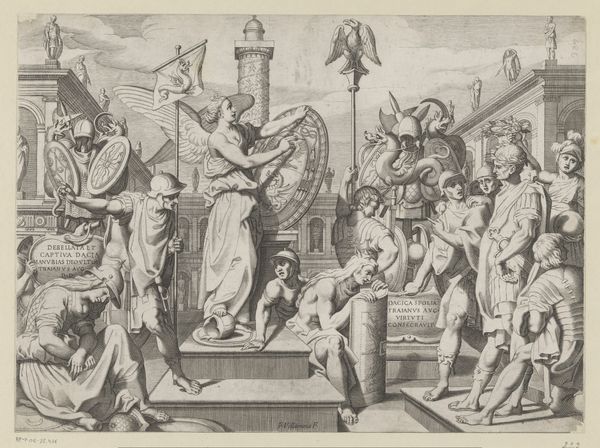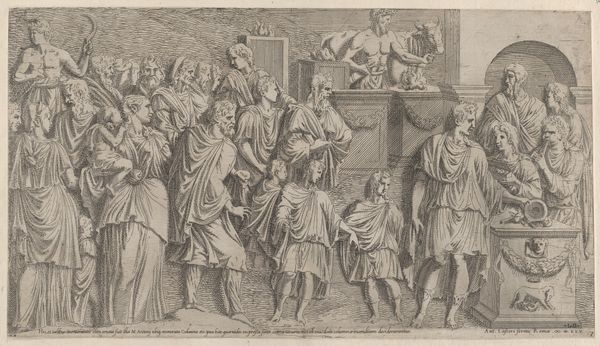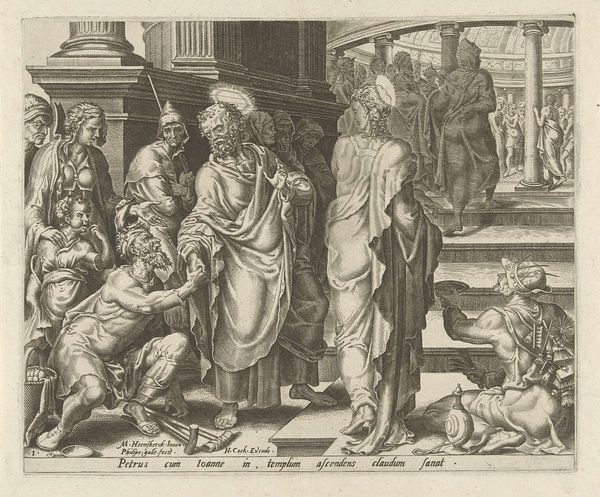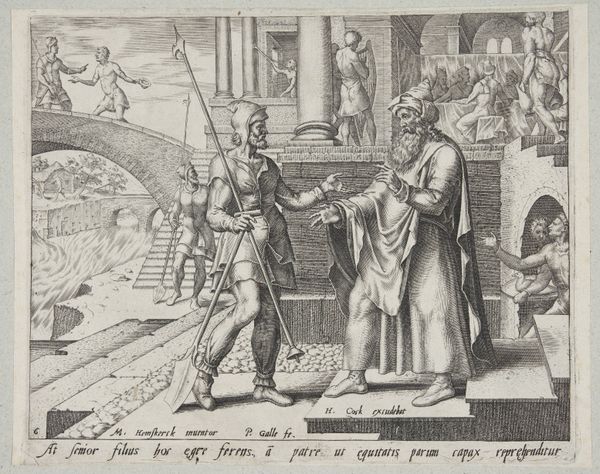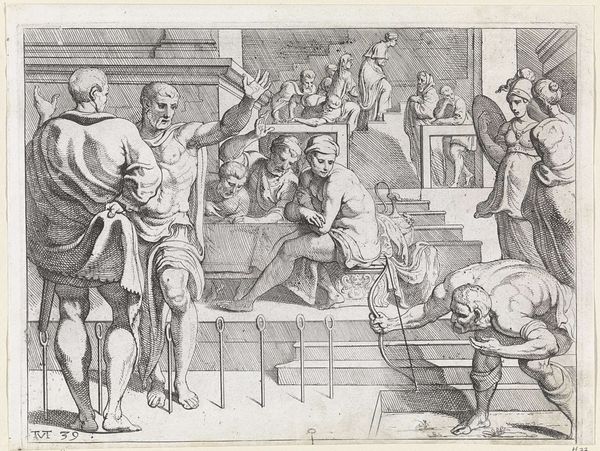
The Roman Soldiers Falling Before Christ, from Old and New Testaments 1548
0:00
0:00
drawing, print, etching, engraving
#
drawing
#
narrative-art
# print
#
etching
#
11_renaissance
#
history-painting
#
northern-renaissance
#
engraving
Dimensions: Sheet: 4 5/8 × 5 11/16 in. (11.8 × 14.4 cm)
Copyright: Public Domain
Curator: Here we have "The Roman Soldiers Falling Before Christ" an etching and engraving from 1548 by Augustin Hirschvogel, now residing here at the Metropolitan Museum of Art. It's quite small isn't it? Almost intimate. What’s your first impression? Editor: Overwhelming. The composition is crammed with figures. It is organized chaos; some soldiers sprawl out in dynamic poses while a calm Jesus leads his disciples toward an unpainted-looking door that makes it all the more ominous. Curator: Indeed. It's a narrative scene, capturing a specific moment from the Gospels. Hirschvogel, working in the Northern Renaissance, likely intended this image for a book illustration, given its size and the proliferation of printed bibles at the time. Consider how this scene would’ve been disseminated. Editor: And considered. I am. Imagine viewing this not as a detached observer, but as someone deeply implicated in religious conflict. This piece, while depicting a moment of divine power, subtly critiques earthly power structures through the failed capture attempt. The presence of the closed door on one side speaks to safety from a threat, an access or not. The men huddled together emphasizes that solidarity. Who does not receive that protection is, again, telling. Curator: It's a powerful demonstration. Hirschvogel cleverly uses line and form to suggest movement, drawing the eye from the fallen soldiers towards Christ and his followers, yet the stark whiteness is quite a contrast. One might interpret this as Christ’s divinity juxtaposed to their brutality, a visual rhetoric common during the Reformation. Editor: Absolutely. And I think seeing the materiality is useful: as a print, its impact relies heavily on reproducibility and accessibility. What does it mean to have an image challenging the very basis of Roman authority circulating widely? It places authority and representation back into the hands of ordinary people to read between the lines. What this print lacks in color, it gains in potential political charge and the promise of resistance, and reflection, for viewers. Curator: Well said. Looking closely does bring new depth to our reading of this Renaissance artwork. Editor: Agreed. It seems this work speaks to many layers of historical understanding. Thank you.
Comments
No comments
Be the first to comment and join the conversation on the ultimate creative platform.
